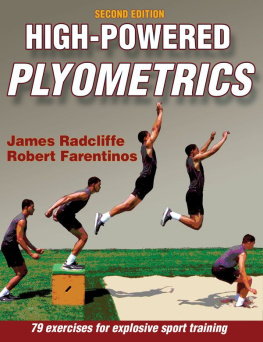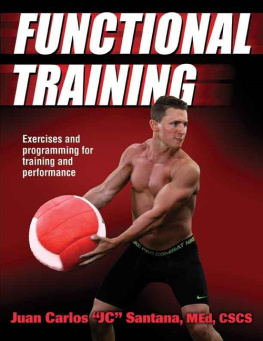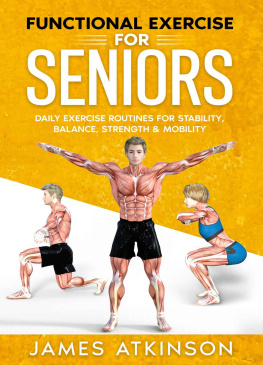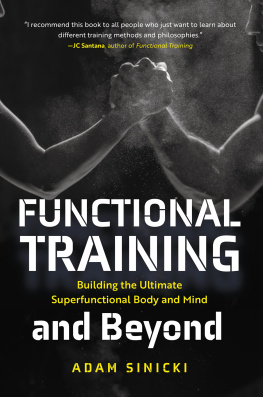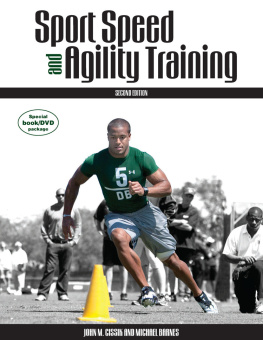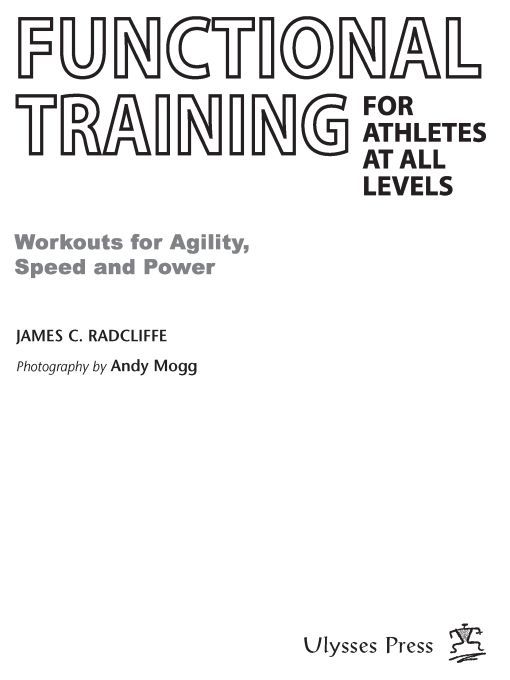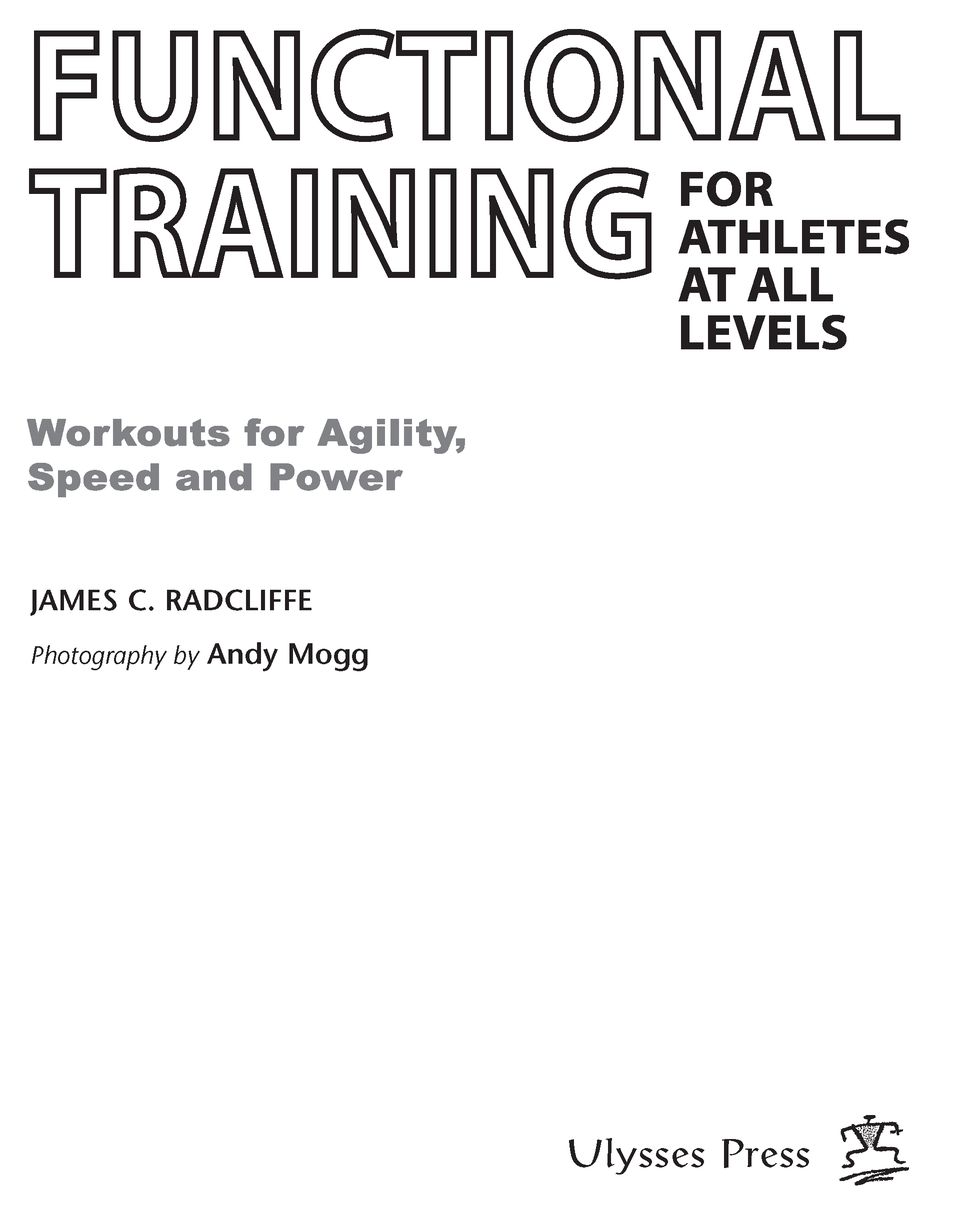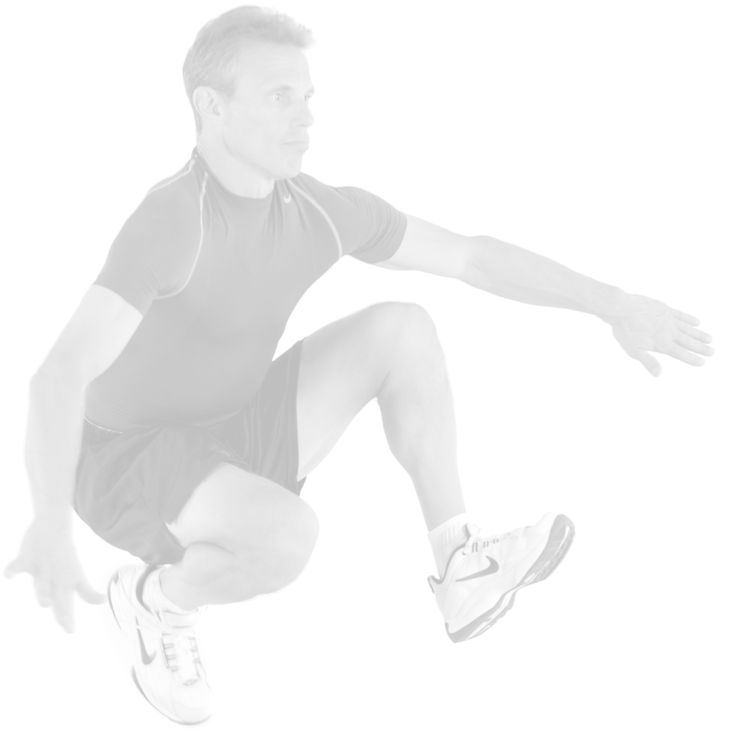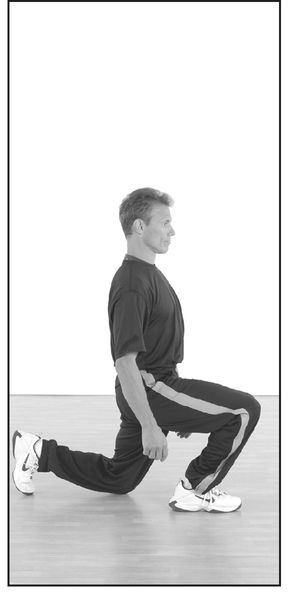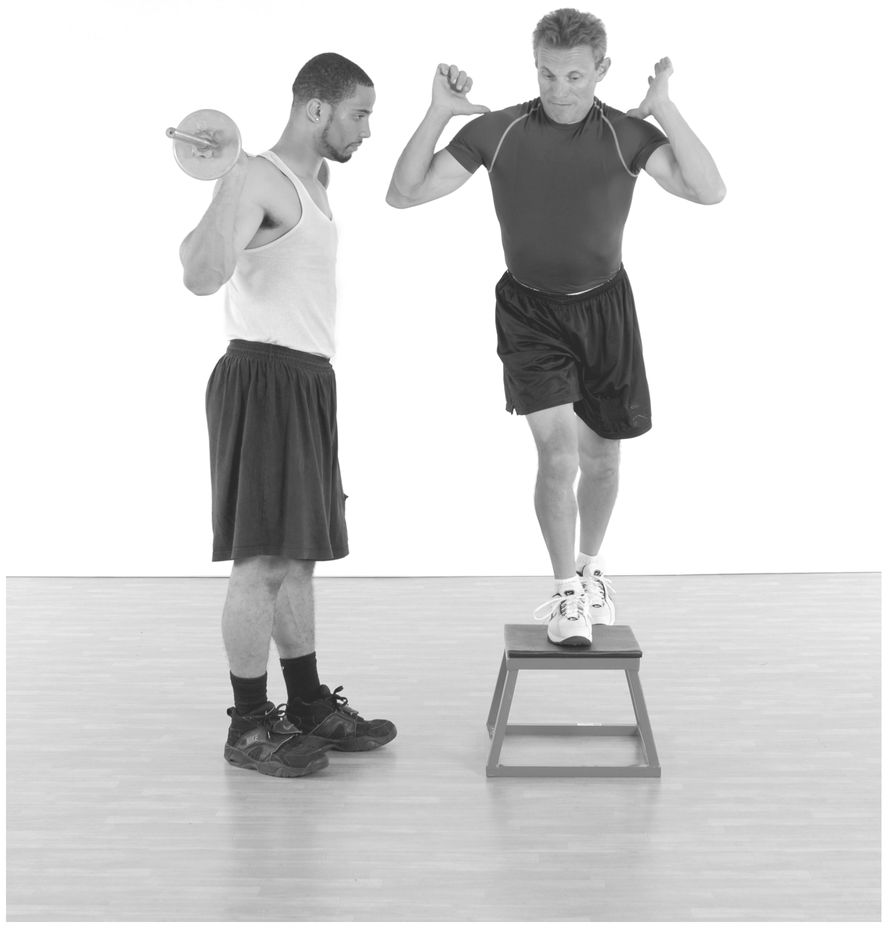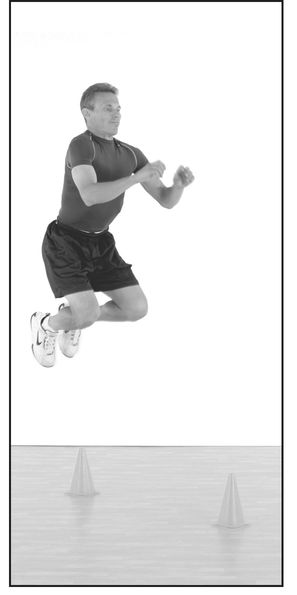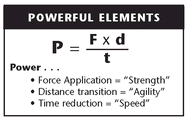Table of Contents
To the Lopezes: Mike Jr., Cath and Mike Sr. True inspiration in training, sport and, especially, life
part one:
overview
why train for function?
Anyone who participates in athletics and wants to enhance themselves both health-and performance-wise needs a training program that 1) prepares them for the rigors of the sport and its movements, and 2) improves the technical and physiological aspects of how the sport is performed. Its rare to find a sport or athletic activity that does not involve posture, balance, stability and mobility.
The majority of games are played upright, on the feet, and flexing, extending and rotating in various directions. Training these functions will only help to improve performance, in addition to keeping you healthier. The ability to move with mobility and stability serves to keep you on the right track to success, and Functional Training will show you the way.
Many therapists, trainers, coaches and practitioners are doing a great deal of remarkable work in the area of training with a functional purpose. But what exactly is functional training? If you type the term in an internet search engine, thousands of sites with hundreds of different definitions will appear. Similarly, ask ten well-known, experienced practitioners how theyd define functional training and you might get ten unique answers.
Vern Gambetta, author, clinician, track coach, and former NBA and MLB strength and conditioning coach, has had a lot of practice explaining, defining and answering inquiries about this concept that he helped create. He states that functional training incorporates a full spectrum of training designed to elicit the optimum adaptive response appropriate for the sport or activity being trained for. Mike Boyle, another accomplished coach and innovative practitioner of this concept, explains that functional training is purposeful training, and is represented as sports general training. Basically, this training employs the handling of ones body weight in all planes of movement.
The intention of this book is not to encompass all of the functional training methodologies being utilized today. On the contrary, the scope of Functional Training is to use some of the concepts behind, as Gambetta suggests, a functional path.
Author Jim Radcliffe, right, demonstrates a move.
benefits of functional training
Within the realm of all sports exists the need for several components of true athleticism: strength, speed and agility. These three can be summed up in one simple wordpower. As you study sport, you realize that one without the others is extremely limiting.
All athletes seek power. Much of athletic training can be derived from simple physics, with the formula for power being the main focus. As depicted in , training functionally is using the formula and increasing your ability to create force by increasing strength. Strength x speed (or, as some professors would advise, force over time) is power. However, the participant who uses functional training principles will not neglect the distance aspect. The ability to produce the optimal amount of force in the least amount of time, and through the greatest distance, is athletic power.
In order to be at your most powerful, you: 1) must possess enough strength to exert optimal amounts of force versus the effects of gravity; 2) do so throughout the greatest distance allowed by the length, mobility, and coordination of your body, either pushing or pulling across the torso; and 3) do so in the least amount of time for the greatest efficiency of total work. Using these three components together, and in concert with one another, aids success in athletic performance (see ).
For athletes, strength in the form of force application is not functional unless it can be applied with an upright posture and balanced on one or both feet. Speed and agility are not functional if the bodys joints are not mobile or stable enough to apply the force and/ or change direction necessary for both safe and successful performance. Therefore, the function of athletic power is strong postural applications of force, balanced across the torso and stabilized by the joints that cross the torso, at speeds and directions that are optimal for successful performance.
.
Training with the concepts presented in this book will allow you to increase the amounts of force you apply (strength development). Although many programs do this, the functional training method develops force by using techniques that coordinate the use of your entire body. For example, many runners improve their strength to help their ability to run. However, runners who dont keep a high hip posture or tall running stance (a posture we call sitting) dont take each stride efficiently. Therefore, as they get stronger from their more traditional training, most of it is wasted on their inability to use this force to improve the efficiency of their strides, not to mention the injury factors that can arise from inappropriate form and technique.
Functional training will help to improve the distance (posture) throughout which the increased force production will travel. The third component, efficient time reduction (speed development), will be another product. Using the example of the runners, once they have improved their ability to produce force through proper posture and technique, theyll improve their landings and take-offs, and the efficiency of how their limbs move about their torso, thus decreasing the amount of time and effort to do so. Many people train hard for years, never realizing true success in overall performance. Training with more of a functional mentality can help achieve greater success in overall performance and health.
Posture
Posture is the way we hold our bodies; in order to maintain our positioning, we constantly make subtle adjustments, called postural sway. Functional training improves the ability to maintain proper athletic postures in flexed, extended and rotated positions involving different planes of movement. It makes particularly good sense when applied to postural actions during flight (between each take-off and landing).
Take a look at any field or court sport such as soccer, football or basketball. Study the postures of the athletes who change direction the most quickly and powerfully. Youll see them bending their knees and hips, yet their shoulders remain up and their backs are flat or arched, not rounded. If you were to take a photo of them at the exact moment of direction change or take-off, they would almost look as if they were going to jump, due to the fact that they are flexed in the power-producing parts of the body and erect in the areas above their center of gravity; they therefore exhibit complete control of where theyre going.


